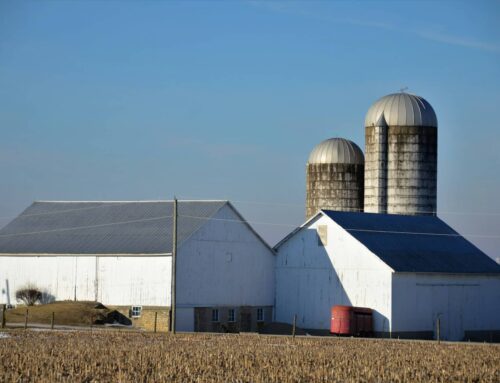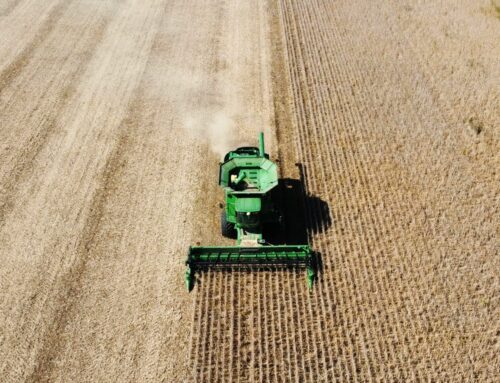Six more weeks of winter means there is plenty of time for Members of Congress to hold hearings and gather input from constituents on a variety of issues, including one of our favorite bills on Congress's to-do list this year – the farm bill.
Almost exactly a year ago, the House Agriculture Committee held its first farm bill reauthorization hearing. Then-Ranking Member (now Chairman) of the Committee, Rep. Glenn "GT" Thompson happens to represent Pennsylvania's 15th Congressional District, the home of Punxsutawney Phil. In our Wastebasket last year, we commended Thompson for recognizing the importance of incorporating farmers' voices into the farm bill debate. This is even more important now as the only way to get a farm bill through this Congress is by bringing more people to the table to write a better bill.
The farm bill is a wide-ranging piece of legislation, covering everything from nutrition assistance programs to federal insurance premium subsidies for crops like corn, wheat, soybeans, rice, and cotton. The 2018 farm bill is expected to cost taxpayers more than $1.3 trillion over ten years. In other words, no small potatoes. With farm bills reauthorized approximately every five years, it's time for a new one. To be precise, some farm bill programs expire at the end of Fiscal Year 2023, aka September 30, 2023.
What's changed since last Groundhog Day?
Well, in some ways a lot, and in other ways, not so much.
What's changed:
- Farm income: For one, net farm income last year was at its highest level in a half century. That's despite looming drought in many parts of the country, hurricane damages in states like Florida, and high costs for farm inputs like fertilizer.
- Farm subsidies: While they've declined from records set during the pandemic ($46 billion to agriculture in 2020 alone), total subsidies are still too much for taxpayers to stomach.
- Federally subsidized insurance, for crops: 2022 was a record-breaking year for the federal crop insurance program. As background, for every $1 of crop insurance coverage, taxpayers pay an average of 60 cents while farmers pay 40 cents. These costs add up. Last year, taxpayers spent a record $12 billion subsidizing certain agricultural producers' insurance premiums. The latest information from the U.S. Department of Agriculture (USDA) says 2022 crop insurance indemnity payments reached $16.1 billion, just shy of the $17.5 billion paid out during the historic 2012 drought.
- Agriculture disaster aid: Despite high incomes and payments from federal crop insurance, ad hoc "emergency" disaster payments were pushing record levels in 2022 as well. Some subsidies went to individuals who actually made a profit, or already received a crop insurance indemnity payment, and therefore didn't need another taxpayer handout.
Why should taxpayers care about any of this? For one, increasingly "dynamic weather," such as a drier Texas, are driving up costs of federal crop insurance and disaster subsidies. Like Punxsutawney Phil's prediction, this isn't changing anytime soon. If we had to bet, factors like these will lead to an even more expensive farm safety net over time. For two, and this is related, farmers can be part of the solution on climate change, to help mitigate emissions from the agricultural sector. Farm practices have far-reaching impacts.
So it is beyond spending. It's also about what our priorities are and what taxpayers are getting for their investments. Currently, just 4% of farm bill spending goes to conservation. This funding is for things such as protection of wetlands and grasslands as well as helping farmers implement practices like cover crops, integrating livestock, and better pest management. Over twice as much is spent on crop-related income subsidies in the Commodity and Crop Insurance sections of the farm bill. That means for every $1 spent on conservation, $2 or more is spent on programs that pad farm business income. This despite the fact that increased use of conservation measures tailored to location, soil, and farmer abilities can actually make farming less risky and more profitable. Also, just an additional 1% of farm bill spending goes to research, energy, horticulture, rural development, trade, and other projects in the massive legislative package.
There's a better way. Instead of continuing to subsidize a handful of crops that largely benefit the wealthiest landowners and agricultural operators, Congress can get a fresh start this year.
Upcoming Senate Agriculture Committee hearings on the farm bill are a great jumping off point. Listening to actual farmers' views on how status quo programs are working (or not) can provide great insight into the farm bill's impact on beginning farmers, consumers, climate, rural communities, and more. Last week on our Budget Watchdog – All Federal podcast, Nebraska farmers Scott and Skyles Kinkaid shared their views on farm subsidies. What they think may surprise you.
It shouldn't surprise Members of Congress, however. Numerous independent analysts – such as the Congressional Budget Office (CBO) and Government Accountability Office (GAO) – recommend common sense cuts to wasteful farm subsidy programs. Former Presidents Trump and Obama, plus a bipartisan set of lawmakers, previously agreed on these types of reforms.
Therefore, it should be easy to create a farm safety net that focuses on true need, is fiscally responsible, and fosters resilience, instead of reinforcing a dependence on federal subsidies. Prioritizing conservation would help farmers withstand the shocks of climate change, reducing the need for disaster payments while also helping sequester greenhouse gas emissions.
Congress, let's work together, so we don't muck it up this time.










